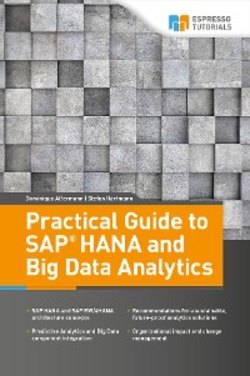Читать книгу Practical Guide to SAP HANA and Big Data Analytics - Stefan Hartmann - Страница 5
ОглавлениеForeword
In today’s world, technologies are evolving at an extraordinary pace and new market opportunities are developing just as quickly. Companies face the challenge of adapting to unfamiliar technologies and markets with different rules and key players. While businesses adapt, IT departments face similar struggles with constantly changing business requirements and new technologies. In these hectic times, it is essential to have a good business intelligence foundation in order to keep track of both new and existing business.
SAP is one of the big players in business software and is currently developing new products and promoting new product suites at a speed previously unknown to most customers. Additionally, traditional SAP-based companies now need to combine their SAP systems with non-SAP-based software more than ever before, e.g. in the context of Big Data. New possibilities to maintain and provide company software, such as cloud platforms make architecture decisions more complicated, but also enable new business scenarios. The complexity lies in understanding the different architecture possibilities and deciding on the best option for your company.
This book aims to deliver clear recommendations for building a solid architecture based on the latest SAP HANA technologies; with an additional focus on the combination with Big Data platforms. We provide a detailed assessment of several possible architecture scenarios, a guideline on how to decide on one option or another, principles for processes, and the organization around such an architecture.
The target audience of this book is mainly SAP BI and Big Data architects, as well as IT architects. However, we welcome anyone else to dive with us into the wide world of SAP HANA BI opportunities. Readers should have a fundamental understanding of how a data warehouse functions, and the associated technologies, as well as a familiarity with Big Data environments.
Personal dedication
This book is the result of a great deal of encouragement, support and contribution from friends, families, and colleagues. Their numerous ideas, hints, and discussions helped us to greatly enrich each chapter. We would specifically like to mention Bikas Panigrahi who provided valuable input during the course of writing this book.
Last but not least, we want to say thank you to the Espresso Tutorials team, especially to Alice Adams, who patiently advised us in formalizing and completing the book.
We have added a few icons to highlight important information. These include:
Tip
Tips highlight information that provides more details about the subject being described and/or additional background information.
Example
Examples help illustrate a topic better by relating it to real world scenarios.
Attention
Attention notices highlight information that you should be aware of when you go through the examples in this book on your own.
Finally, a note concerning the copyright: all screenshots printed in this book are the copyright of SAP SE. All rights are reserved by SAP SE. Copyright pertains to all SAP images in this publication. For the sake of simplicity, we do not mention this specifically underneath every screenshot.
